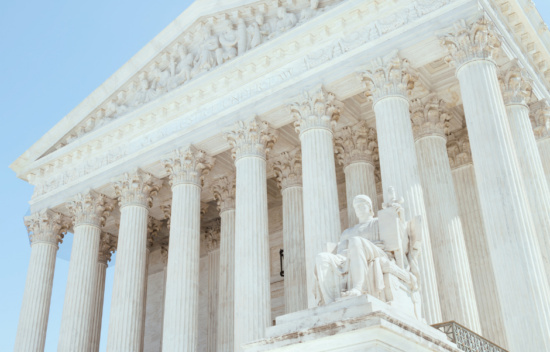
Learning to Read Supreme Court Decisions
Guiding Question
- How can understanding the principles of the Constitution help citizens participate effectively in a democratic society?
Objectives
- Students will:
- Identify the structure and purpose of a Supreme Court decision.
- Explain the significance of key phrases or excerpts from landmark decisions.
- Use a simplified framework to analyze the meaning and impact of a Court ruling.
Resources
- Learning to Read Supreme Court Decisions Primary Sources (one per group or pair)
- Case Decoder Graphic Organizer
- Whiteboard or chart paper
- Sticky notes or index cards
Facilitation Notes
- This lesson assumes that students have an understanding of the Judicial Branch. Check out our The Constitutional System of Government lesson to teach the branches of government or our Healthy Tension through Checks and Balances Case Studies to understand how the Judicial Branch exercises its powers through checks and balances.
Anticipate
- Write on the board:
- “You have the right to remain silent.”
- Ask: Have you heard this before? What do you think it means?
- Briefly explain: These are not just phrases – they come from Supreme Court decisions that changed how laws work across the country.
- Play intro to the Judicial Branch video from BRI’s Government and Politics curriculum.
- At the end of the video, ask students to reflect on one thing they already knew and one thing they learned from the video.
- Watch the video again if needed.
Engage
Anatomy of a Supreme Court Case Overview
- Use the board or chart paper to make a simple anchor chart explaining what a Supreme Court case is:
- Background (What happened?)
- Question (What constitutional issue is being decided?)
- Majority Decision (How did the Court rule?)
- Reasoning (Why did they rule that way?)
Explore
Case Reading & Decoding
- Transition: Divide students into small groups or pairs. Give each group one excerpt (Miranda or Engel).
- Students use highlighters and/or sticky notes to mark:
- Words they recognize
- Words or phrases that are confusing
- A sentence they think is really important
- Distribute to students the Case Decoder organizer that includes:
- Case Name
- Year
- What happened?
- What constitutional right was in question?
- What did the Court decide?
- What’s a quote that helps explain why?
- They fill in the “Case Decoder” together, using the excerpt and their notes.
Scaffolding note: If needed, provide sentence starters to prompt and support student thinking:
- “We think this quote is important because…”
- “This case matters because it tells us…”
- “The Court’s decision changed the way…”
Gallery Walk
- Groups post their filled-in “Case Decoder” sheets around the room.
- Divide students into pairs and facilitate a gallery walk.
- A gallery walk is an interactive activity where students move around the classroom to observe and respond to displays (posters, images, documents, or questions) posted on the walls. In small groups or individually, students rotate through stations, discussing or writing down their thoughts at each one.
- As students rotate, they write on sticky notes:
- One new thing they learned
- One question they still have
- Optional Activity: Quick class vote or reflection: “Which case do you think affects your life more? Why?”
Assess & Reflect
Option 1: Completed Case Decoder for Engel v. Vitale or Miranda v. Arizona
- Students can submit their case decoder from the Gallery Walk for assessment.
AND/OR
Option 2: Completed Case Decoder for a new Supreme Court Case
- Show a short, new quote from a Supreme Court decision (can be real or made up) and ask:
- What clues would help you figure out what this case is about?
- Why might this quote matter in real life?
Teacher note: More Supreme Court cases can be found in the Healthy Tension through Checks and Balances Case Studies. You can also check out our Supreme Court playlist.
Extend (Optional)
- Students write a “mini-decision” in the voice of the Court on a fictional school-based issue.
- Add dissenting opinions or include a short excerpt from one to show that not all justices agree all the time.
- Compare a quote from the majority opinion and one from the dissent (if age-appropriate).